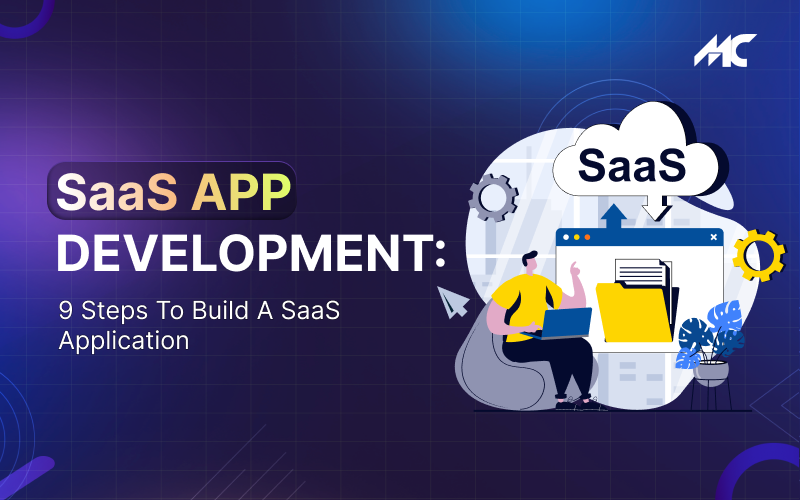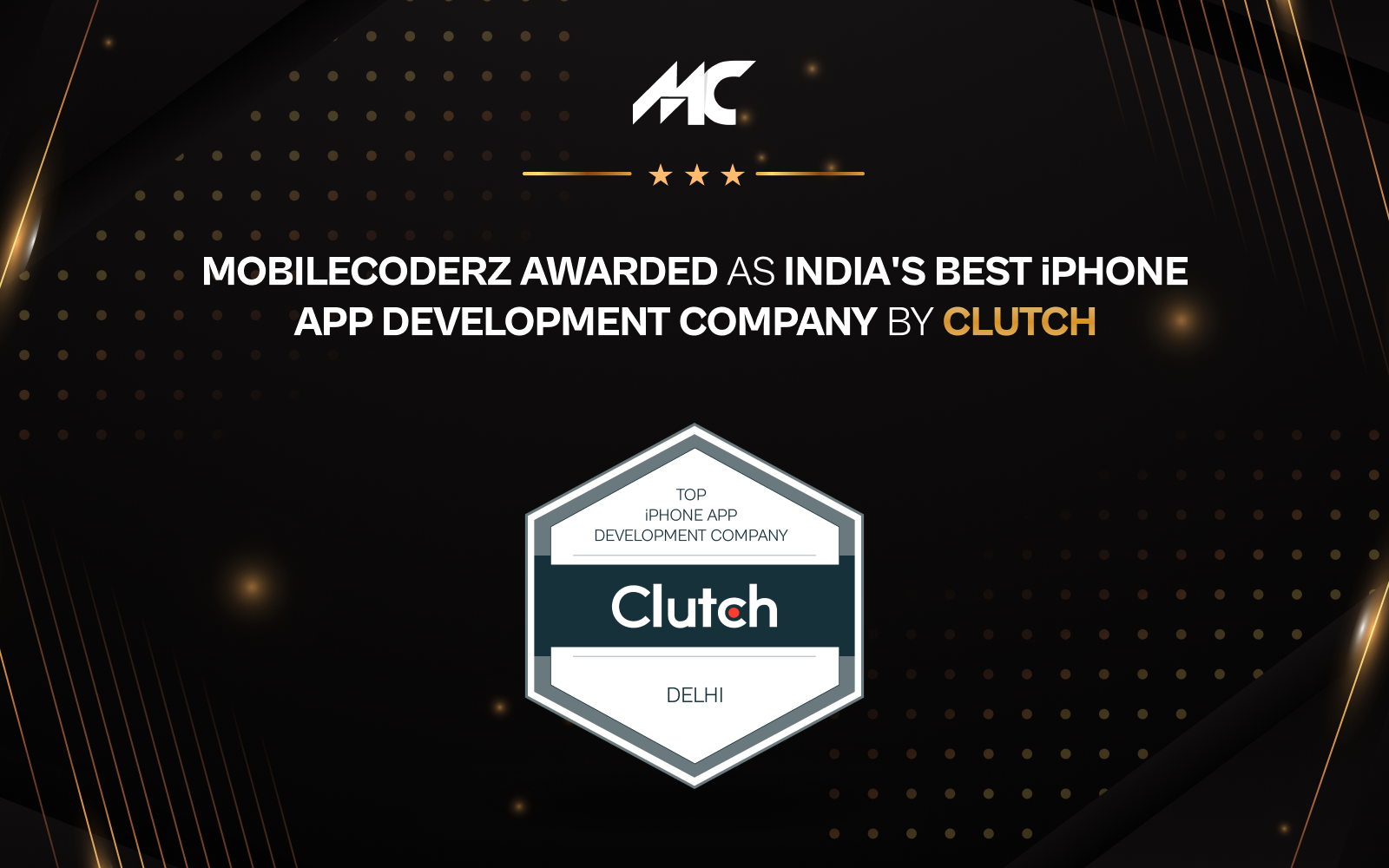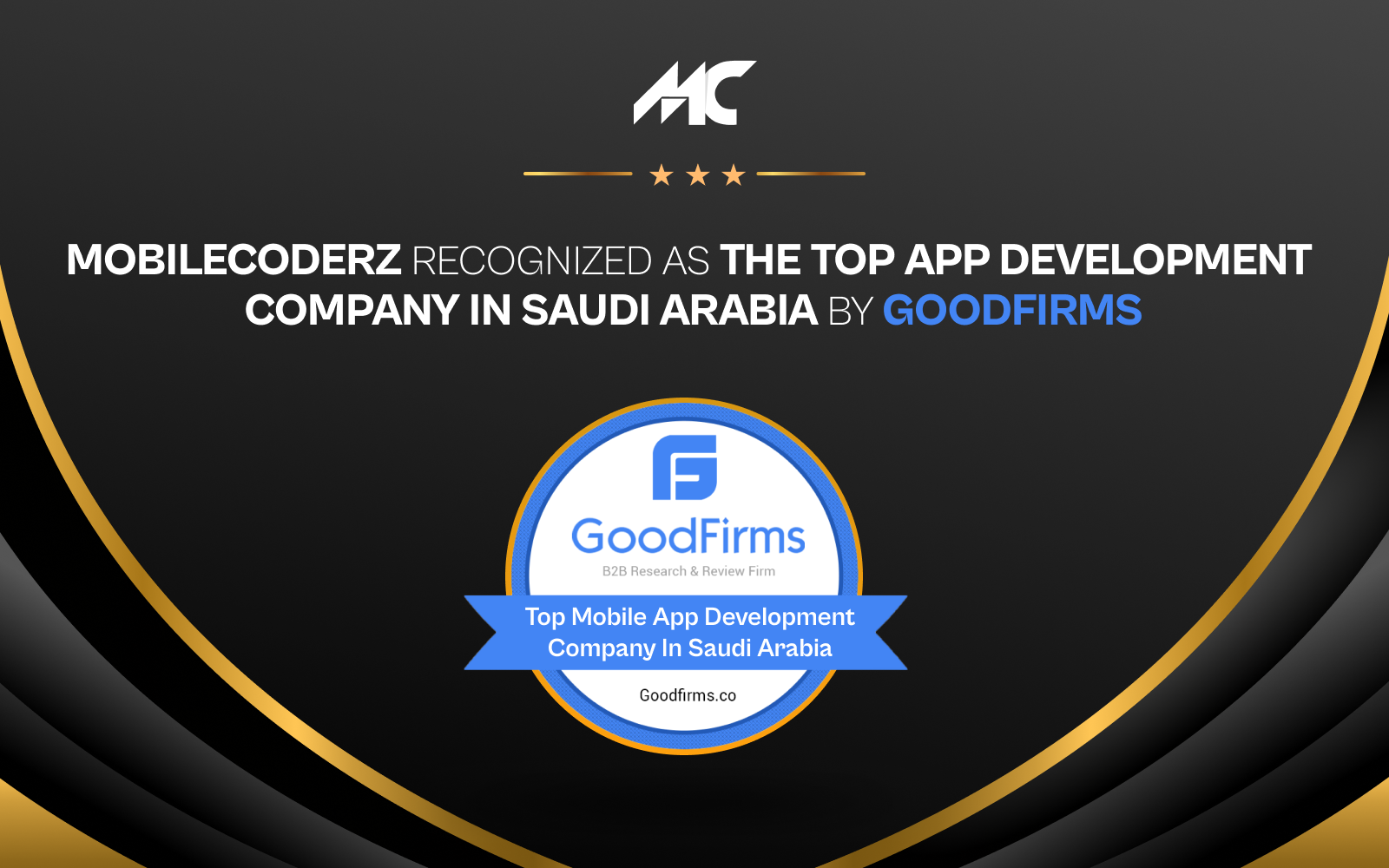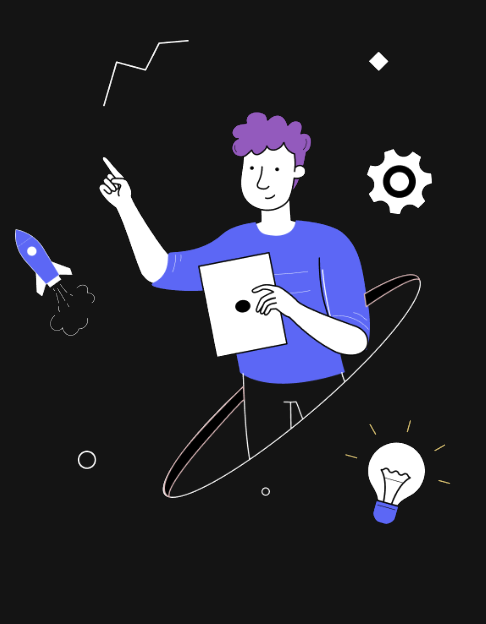SaaS App Development: 9 Steps to Build a SaaS Application
Modern businesses need more flexible and agile software solutions to meet today’s rapidly evolving markets. Traditional software models fail to meet those expectations because there are many constraints to their quick evolution.
Therefore, businesses are shifting to the cloud for a flexible and nimble IT infrastructure that allows them to quickly adapt and grow.
Many businesses have chosen the SaaS model of the cloud that enables them to build, run, and offer their applications on a modern and adaptable infrastructure.
SaaS or Software-as-a-Service is a cloud-based software model where an application is provided via the Internet to the users regardless of the devices they use. Unlike traditional software, it is not installed on the devices.
Creating a SaaS application is not an easy process and requires considerable planning, research, and sessions of brainstorming before you come up with an innovative idea.
You need an understanding of your target audience, business goals, pricing strategy, and more to build a disruptive SaaS product.
In this comprehensive guide, we have covered nine simple steps to build a SaaS app in detail. Stick to this guide to create a SaaS product that meets your aspirations.
Why Would You Invest in SaaS Application Development?
Businesses get multiple benefits by investing in SaaS applications including lower upfront costs and an agile IT infrastructure.
The following are the key benefits of developing SaaS apps.
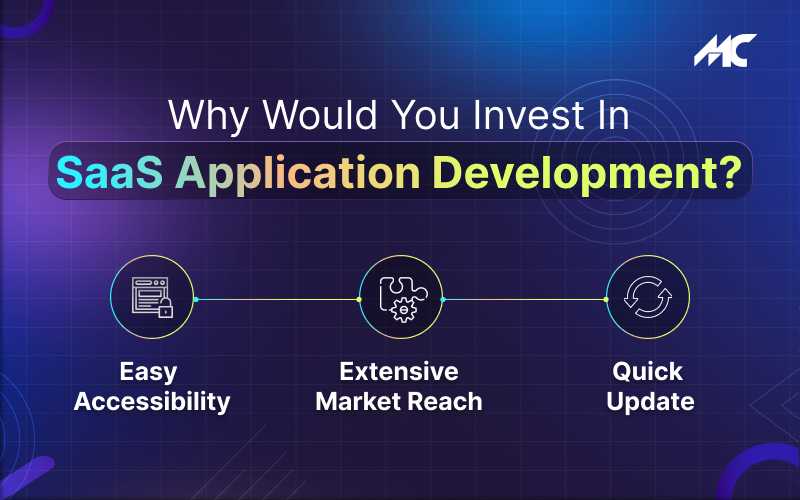
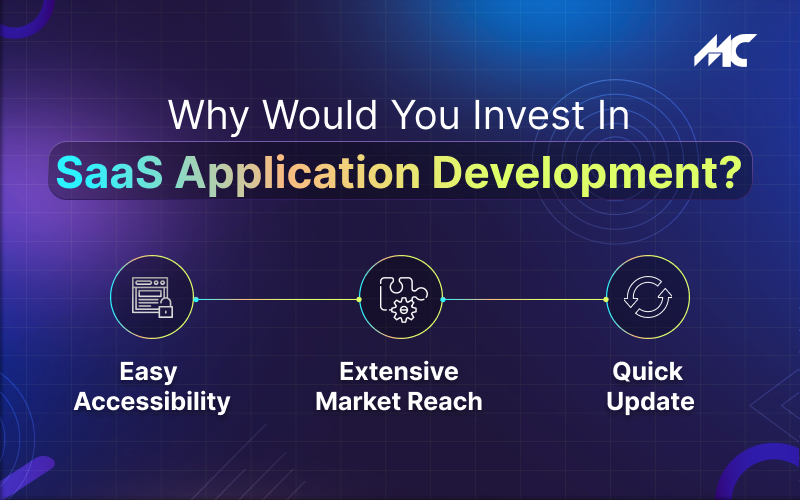
1. Easy Accessibility
What is most attractive about SaaS solutions is their accessibility. SaaS application development services can be accessed by users quickly regardless of the devices they are using provided that there is a stable internet connection. So, users can access the application and use it as they choose, irrespective of whether the device is a mobile or desktop.
The quick and easy accessibility of SaaS software makes it more favorable to users. Plus, they can use it on the go without going through any complicated installation or configuration process. A SaaS application is always ready to allow users to quickly perform the tasks they intend to. Therefore, the adoption and usage rates are high for SaaS applications.
2. Extensive Market Reach
SaaS applications offer an extended market reach and are accessible to a wide range of audiences. You can build a SaaS product that will target a specific customer group using a Vertical SaaS application model. With this app model, you can build an industry-specific SaaS application with specialized features.
However, Vertical SaaS is only available for a specific industry or market niche that bars access to other types of customers. In this case, you can leverage Horizontal SaaS to broaden the market access of your SaaS application by creating a general-purpose product.
It enables you to create applications that are meant for multiple customer groups. SaaS software like G-suite and Dropbox are examples of the horizontal SaaS model.
3. Quick Updates
SaaS provides many advantages over traditional software models including faster releases of updates. The process of building, testing, and releasing new updates is time-consuming in traditional software as the roles of development and operations teams are divided causing communication gaps and delays in approvals.
SaaS provides an efficient approach to software development with DevOps implementation and agile methodology. Development and operations teams come together which results in quick communication and faster approvals. Also, automation is used to streamline processes. As a result, new updates are pushed more quickly in this case.
The Process of SaaS Product Development
SaaS application development is a complex process and you need proper planning to make a mark in this market.
Let’s check out the steps to develop SaaS applications.
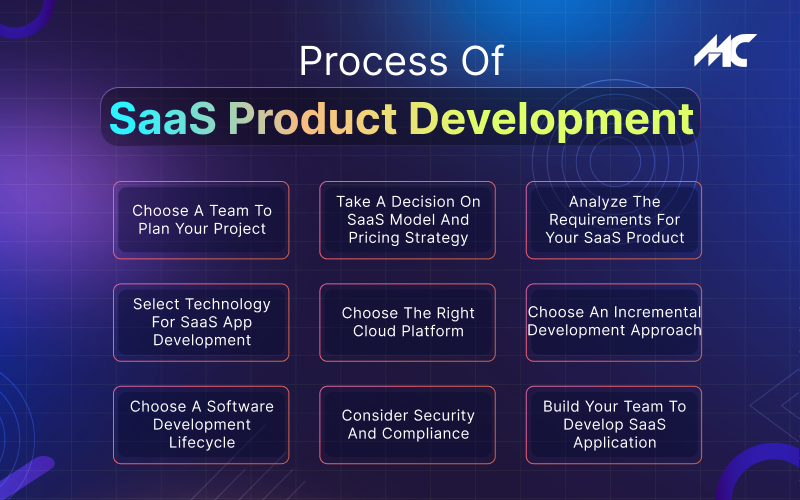
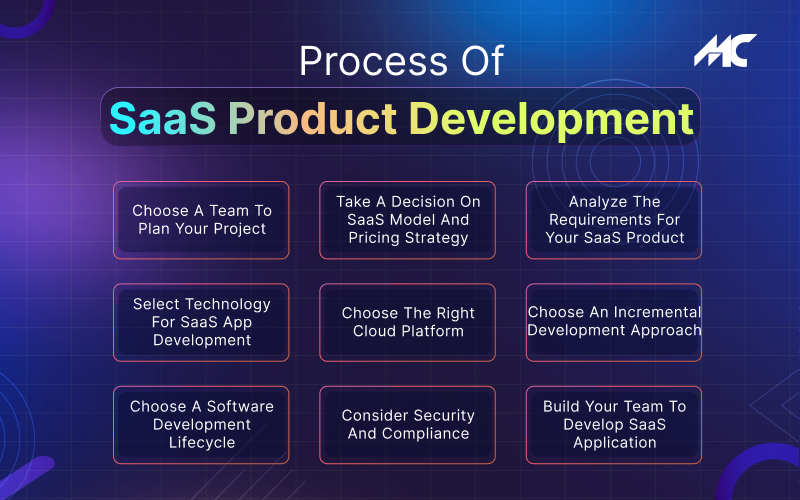
1. Choose a Team to Plan Your Project
Developing a SaaS application requires planning and research. You need some professionals who will plan and create a roadmap to build your SaaS product.
This team will go through all the aspects of your project to come up with a development plan that will be executed by your development team.
Your planning team should have the following experts:

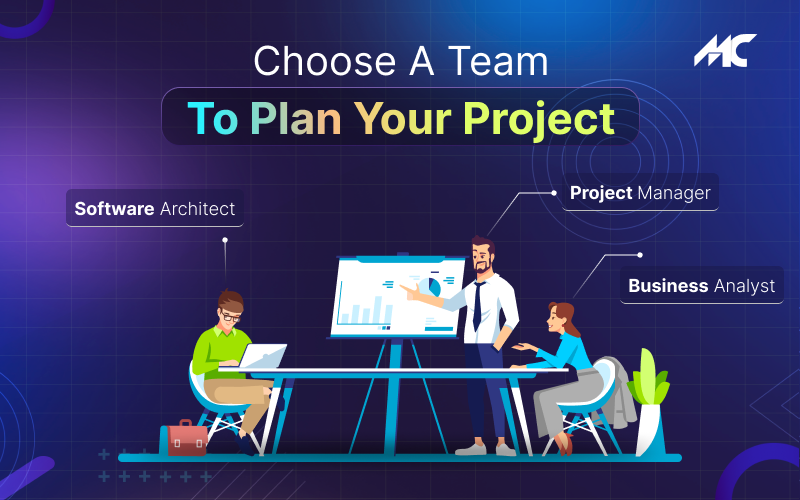
Project Manager
This professional will take care of all the project-related activities, interact with your team, and ensure the project is on the right track. They are proficient in agile project management methodology to strategize and plan the project with efficiency.
Software Architect
A professional that helps to choose the best software architecture for your application. Software architect also guides the development team and provides technical support including coding to build the right software product.
Business Analyst
BA or Business Analyst is a professional who documents your project requirements and helps you map out the SaaS development process.
2. Take a Decision on the SaaS Model and Pricing Strategy
After choosing the right team for SaaS application development, the next step is to decide on the SaaS business model. You will need a complete understanding of your target audience to make this decision. It will help you decide who your target is and choose a SaaS model that fits your needs.
Extensive research and planning are needed to make an appropriate decision. Your market research efforts will include creating buyer personas, user interviews, and discovery phases. Based on your market research, you can choose from two types of SaaS models: Vertical SaaS and horizontal SaaS, more on this below.
Vertical SaaS
This is a SaaS business model where your application is available for a specific type of industry or market niche instead of covering all kinds of customers. So, the target audience is well-defined and your product is loaded with specialized features to meet the requirements of certain customers.
For example, Textura is a payment processing SaaS software from Oracle that is dedicated to the construction industry. So, this product is exclusively available to business customers that are in the construction domain with industry-specific features.
Horizontal SaaS
Unlike Vertical SaaS, it is a general-purpose SaaS model where software is available to a wide spectrum of audiences instead of a particular industry or market niche. Hence, Horizontal SaaS is an all-inclusive solution that is available to every type of customer regardless of their market niche.
Google product like G-suite is an excellent example of horizontal SaaS that is accessible to everyone whether a normal user, a corporate user, or any other type of user.
Pricing Strategies that You Need to Consider Before Choosing a Pricing Model
- Penetration Strategy: Starting with a lower price to capture the market and increase the price after gaining a position in the market.
- Competitor-based Pricing: Setting the price that competitors are charging in the market.
- Value-based Pricing: This strategy determines the prices based on the perceived value of the product.
- Free Trial Pricing: Your product is available for free for a limited time and customers have to purchase it after that time is over.
Review Pricing Models
Once you have decided on the desired SaaS model for your application, you need to choose a pricing model. There are multiple SaaS pricing models that companies use today and you can do a competitor research to determine your pricing options.
The following are the SaaS pricing models being used today:

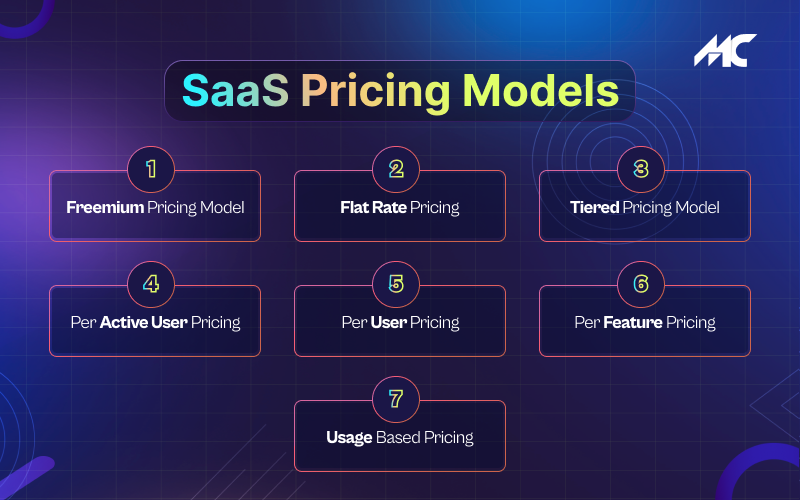
Freemium Pricing Model
Freemium is a popular pricing model for different types of products besides SaaS software. With this model, companies offer a combination of free and paid service models with certain limitations. Free pricing packages come with limited features and if customers want more of the service they can choose from the different premium packages.
There are many examples of companies that are using this pricing model including Dropbox, Evernote, Slack, Grammarly, etc.
The following image shows the pricing options for Grammarly and there is a free package that is available with some features. Grammarly users can access more features by choosing from options like Premium and Business that are to be paid for.
Pros of the freemium pricing model
- Companies often struggle with the initial adoption of the software and freemium can benefit in this aspect because the free version can showcase the value of the product.
- Your product has the potential to go viral like Dropbox with a free version of the product that users can refer to others.
Cons of the freemium pricing model
- Free users won’t fetch any revenue for your business and so the paid users will need to generate enough revenue to maintain your services.
- If your product solves the problem with a free solution, users are less likely to agree to pay for the product.
Flat Rate Pricing
Under this model, you can set a single price, for a single product with one set of features. So, the customers will pay a lump-sum fee for using your SaaS product and accessing all the features it offers.
For example, your SaaS app could be available at a flat rate of $300 monthly or $3,600 annually.
Pros of flat rate
- Any prospective customer can easily understand your pricing with a flat rate model.
- All your marketing energy can be focused on selling a single product at one price.
Cons of flat rate
- If your pricing is for small businesses and an enterprise mulls to choose your product, you won’t be able to extract the value by offering higher pricing.
- You cannot play with the pricing to lure customers at a flat rate, so they either choose it or not.
Tiered Pricing Model
Most SaaS companies follow a tiered pricing model where they can offer multiple packages comprising various combinations of features. So, unlike a flat rate where a single product is offered, tiered pricing enables companies to offer several variations of their product with different sets of features. Often these variations are targeted to different types of users based on budget and usage level.
For example, you can see in the following image, Salesforce is offering its Sales Cloud in four different pricing packages with various features and benefits.
Pros of tiered pricing
- It helps to appeal to different customers because you can tailor your pricing according to customers’ requirements.
- Tiered pricing will help you target different personas that will maximize your profit and diversify your customer base.
- It provides an opportunity for upselling because when customers’ needs increase they will go for the next pricing option.
Cons of tiered pricing
- Too many pricing options are confusing and making a choice can become overwhelming which could result in an abandoned cart.
- Trying to appeal to everyone with a wide range of packages is not always beneficial.
Usage Based Pricing
This is also known as the pay-as-you-go pricing model because the customers pay based on their usage. So, the price goes up when the customers use more the service, and it goes down when the use decreases.
It is a defacto pricing model for companies offering cloud services like Amazon AWS and Microsoft Azure. Customers pay more when the usage of computing resources increases, and they pay less when the usage of resources decreases.
The following image shows the different pricing of running containerized applications on Amazon AWS based on the usage of resources.
Pros of usage-based pricing
- This provides an advantage to customers that have volatile demand. It helps such customers they can avoid paying more in situations when the usage is low.
- It removes the barrier to entry because the upfront cost is not high and customers with a limited budget can also use it as their initial usage is low.
- When there is a fixed for the service, the heavy users will take up much of your resources without compensation for it but usage-based pricing can solve this problem.
Cons of usage-based pricing
- Usage-based pricing makes it difficult to predict revenue because bills vary from one time period to another.
- Customers with heavy usage will have unexpected cost surges with the wild fluctuations in usage.
Per Active User Pricing
Some SaaS companies offer services with yearly billing, especially those that target enterprise customers. Pricing is done based on the number of users signing up for the use of the software. But in this case, a new customer can pay more upfront if the number of users using the software is less.
Per active user pricing solves this problem and the billing will be done on the actual number of customers using the software. Hence, the customers have to pay for as many users as they use the software.
The following image shows the pricing model of Slack that charges based on the number of active users.
Pros of per active user pricing
- Customers can avoid wasting money on unused resources and pay for only active users using the software.
- It can help you target enterprise customers by offering the product on per active user pricing that the enterprise can test company-wide and make a decision.
Cons of per active user pricing
- Although this pricing model is beneficial for enterprises, small businesses may not get much incentive with this model because of a small team and budget.
Per User Pricing
Per-user pricing is a simple pricing method and many SaaS companies use it to offer their products. Under this pricing model, the price is fixed per user. So, the more users are there, the more the software will cost. The cost will double when there are two users and increase this way with every additional user using the software. Customers can easily understand and predict their monthly or yearly bills.
The following image shows an example of Trello that uses the per-user pricing model.
Pros of per-user pricing
- It is an easy-to-understand and direct pricing model that enables customers to make predictions about their costs.
- The revenue increases vis-a-vis the number of users. So, when the number is doubled the revenue is also doubled.
- Calculating and forecasting the revenue for each month is painless with this pricing model.
Cons of per-user pricing
- It can impact software adoption because the customers will be more reluctant to add new users to avoid additional costs.
- This pricing model limits adoption and can also increase the abandoned rate.
Per Feature Pricing
Apart from determining the price based on users, it’s possible to differentiate prices based on features. So, in this model, pricing is tiered based on functionalities in every offering. A higher pricing tier will offer the most functionalities to software users.
The following image shows an example of QuickBooks pricing that offers per-feature packages.
Pros of per-feature pricing
- It allows customers to pay for the features they really need. So, they can choose plans that are suitable for their use case.
- They can save money by choosing the appropriate features and not spending on what they don’t need.
Cons of per-feature pricing
- It can be tedious to decide on plans because knowing the preferences of every customer may be difficult. Hence, it’s not easy to determine what features different customers need.
- Customers may not like add-ons for their packages and can avoid upgraded versions.
3. Analyze the Requirements for Your SaaS Product
It is important to gather all the information about your SaaS app development project to take the right course of action. Business development professionals will play their role here in collecting and compiling the relevant information that will take your project in the correct direction.
You will make critical decisions here like how your SaaS application will be available to users. Will it be web-based or a mobile app? If you also need a mobile SaaS application, will it be Android, iOS, or cross-platform?
You have to make decisions about the functional and non-functional requirements of your application. The following are the different requirements that BDs have to work with for SaaS application development.
- Business Requirements: Define the wishes and objectives of the business with the SaaS development.
- User Requirements: Gather information about user needs and pain points that can be done with user interviews and discovery sessions.
- Software Requirements: It covers all the functional and non-functional requirements of your application.
- Technical Preconditions: These are technical specifications that your application needs to meet like the external database, communication protocols, architecture, APIs, etc.
Functional Requirements
It includes the functionality of your application that users can utilize to perform various tasks in the app. Sample requirements look like this:
- Sending notifications to users.
- User interactions.
- Dashboard to display information.
Non-functional Requirements
- Performance
- User experience
- Accessibility
- Scalability
- Security
The software architect will define and document all the non-functional requirements for your SaaS application. All project specifications need to be documented properly to obtain the approvals and apply the changes.
4. Choose an Incremental Development Approach
It’s the best idea to start with an MVP (Minimum Viable Product) and then build your SaaS application incrementally. How does it benefit? Since you are going to offer a new SaaS product, there are chances that it could fail. If that happens all your efforts and investments will go wasted.
You can mitigate the risk by validating your idea through an MVP Development. A minimum viable product is software that is launched with basic features or enough features to attract early adopters. It will help you validate your idea. Developing an MVP requires less effort and money than developing full-fledged software.
You can leverage the agile methodology to build and release new features for your SaaS application iteratively once it gets traction in the market. Encourage users to give feedback for your SaaS application that helps determine the kind of functionalities that you need to meet the requirements of your application users.
Your application may require drastic modification or smaller incremental changes based on user feedback. The agile approach will allow you to quickly build and release your application to users.
5. Choose the Right Cloud Platform
When it comes to SaaS software development, the role of choosing the right cloud platform cannot be undermined. Your application will be deployed, hosted, and run in the cloud environment that can determine the non-functional requirements for your application like performance, security, and scalability.
There are many options for cloud deployment that businesses can choose based on their optimal strategy. The following are the deployment options businesses have for their IT infrastructure.
- Public Cloud: This is a deployment model where computing resources are available via the public internet. It’s a multi-tenant platform where you share resources with others. It’s cost-effective but can have compliance issues.
- Private Cloud: With this deployment model, you get private space for your application just like your on-premises infrastructure. However, the costs of the private cloud are high.
- Hybrid Cloud: It takes a hybrid approach by using both private and public cloud infrastructure. With this model, workloads with security concerns can run in the private cloud, and other workloads run in the public cloud.
Although there are many businesses that choose a cloud-first model, a majority of businesses prefer a hybrid approach. According to stats from Statista, 72% of businesses adopting the cloud are choosing a hybrid cloud deployment model.
This data tells the whole story that most companies are going to a hybrid approach rather than shifting completely to public or private cloud. The reasons for this are many like security.
Today, the capabilities of the cloud have increased and there are many ways you can benefit from it.
Start by determining the type of cloud platform you want for your business. The cloud platform will manage all IT resources for your application whether server, runtime environments, networking, or anything else.
You have the following options to choose a cloud platform for your SaaS application.
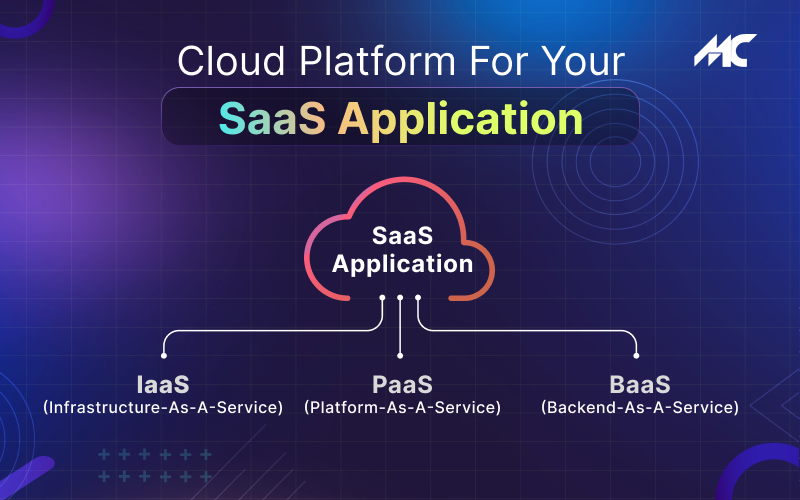
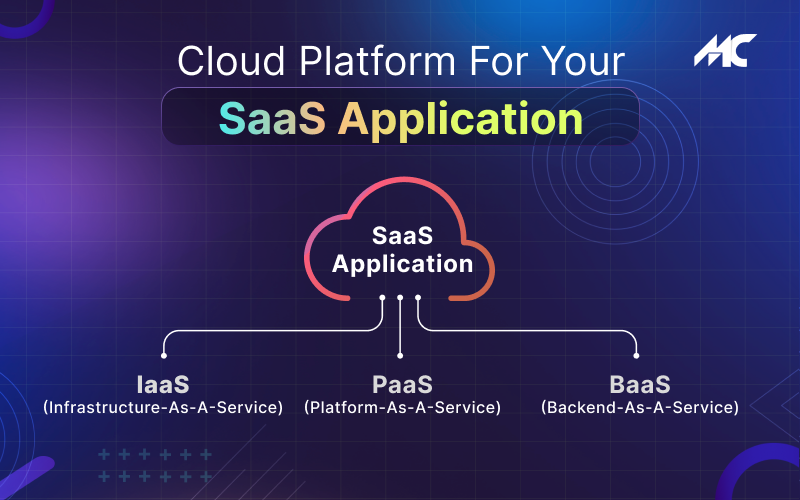
- PaaS (Platform-as-a-Service)
PaaS is a cloud model where the cloud provider offers the complete development and deployment environment for your application consisting of servers, networking, storage, middleware, business intelligence, database management systems, etc. The cloud provider offers all the hardware and software components to build, run, and manage your application.
- IaaS (Infrastructure-as-a-Service)
It provides IT infrastructure on demand to host and manage your applications. IaaS offers a subset of the PaaS platform because it doesn’t provide the resources to develop your application. IaaS offers networking, operating systems, servers, storage, and data centers.
- BaaS (Backend-as-a-Service)
This model allows you to leverage the ready-to-use backend for your application and you can focus on the frontend. It is a cloud model that helps you avoid the development and maintenance of your own backend.
It comes with pre-written software for various activities like remote updating, database management, user authentication, etc. You get persistent storage and a server to handle backend operations. There is a similar model for mobile applications which is MBaaS (Mobile Backend-as-a-Service).
Top cloud service providers:
- Amazon AWS
- Microsoft Azure
- Google Cloud Platform
6. Select Technology for SaaS App Development
Selecting the right tech stack is crucial for your application’s quality and performance. The software architect will help you choose the best technology for your SaaS application based on the requirements and specifications.
Let’s see what are the best technologies available today.

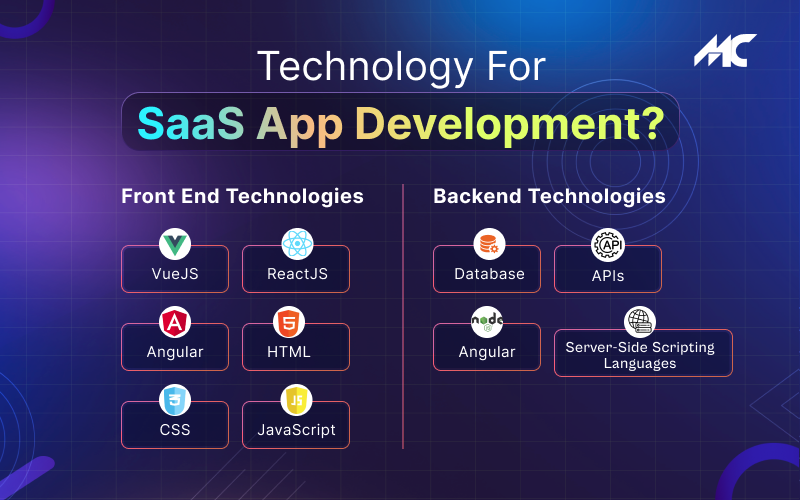
Front End Technologies
Front-end is the user interface of your application and this is the component that users interact with. You need suitable technology for your application front-end to make it stand out and user-friendly. The following are some popular front-end technologies.
VueJS
Vue.js is a versatile JavaScript framework for creating web user interfaces. It is open-source and supports compiler-optimized rendering. This framework has the characteristics of both a library and a framework that makes it a really versatile solution for web UI development. It is based on Model-View-ViewModel (MVVM) architecture with benefits like Virtual DOM, lightweight design, integration with other frameworks, DOM manipulation, and more.
Angular
It is a JavaScript framework that is open-source and widely used for developing a myriad of web solutions. There are many benefits of Angular including two-way data binding, MVC architecture, component-based coding, modularized app structure, DOM manipulation, dependency injection, and more.
ReactJS
A well-known JavaScript library used for creating engaging, responsive, and interactive user interfaces. It’s open source and offers benefits like component-based coding, one-way data binding, reusable components, declarative, etc. It offers faster rendering with its Virtual DOM feature.
HTML/CSS/JavaScript
You can also use basic web technologies -HTML, CSS, and JavaScript to create your application front-end from scratch. But this approach requires everything to be built from the ground up while front-end frameworks/libraries like Angular and ReactJS can provide a basic foundation to develop your application.
Moreover, you can use UI toolkits like Bootstrap and Tailwind to get ready-to-use front-end elements to build your app more quickly.
Backend Technologies
The backend is the engine of every web solution that holds database, APIs, and backend logic that enable UI to communicate with it and fetch data that is presented to the users. The following is the set of technologies you need to build your application backend.
Database
You need to choose the right database type for your application based on its functionality and the data it handles. Make a choice between relational and non-relational databases or you may need both of them based on your application’s complexity. Popular databases include MySQL, MongoDB, PostgreSQL, and Oracle.
APIs
Build necessary APIs for your web application that will provide communication between your application UI and the backend. Create RESTful APIs to meet this requirement.
NodeJS
Node.js is a runtime environment that makes it possible to execute JavaScript programs without using any web browser. For a long time, JavaScript was used on the front-end because it could be executed in the web browser but NodeJS allows it to execute on any platform now. Node.js is deployed to handle a large volume of connections concurrently in a nonblocking fashion. NodeJS processes the client’s requests.
Server-side Scripting Languages
There are many programming languages used for server-side programming like Python, PHP, C#, Java, etc. You can also use frameworks like Python framework like Django and Flask for backend development.
Type of Mobile Application
If you want to create a mobile application, you have to choose whether you want to target a specific platform or develop an application that will target different platforms. Based on your requirements, you can choose from three mobile application types as follows:
Native App
It’s a mobile application that is built to meet the requirements of specific platforms like Android or iOS. These apps are developed for certain mobile OS and are available to those users using that kinds of devices.
Native app technologies
- Java
- Kotlin
- Objective-C
- Swift
- C++
Cross-platform App
These types of applications are meant to target multiple platforms that use code that executes on several mobile OS. For example, a cross-platform mobile app has a single codebase and it can execute on both Android and iOS devices.
Cross-platform app technologies
- Flutter
- React Native
- Xamarin
- Appcelerator Titanium
Hybrid Applications
These apps are a combination of native apps and web apps. They run like a web app within a native app shell. In short, they have the UI of a native app but their functionality is of a web app.
Hybrid app technologies
- React Native
- Ionic
- Apache Cordova
7. Choose a Software Development Lifecycle
Applications are built in phases and the nature of these phases depends on the SDLC (Software Development Lifecycle) being followed for the process. An SDLC shows the relationship between different phases of application development and provides a structured workflow to ensure the quality of the end product.
The SDLC determines different steps like designing, coding, testing, deployment, maintenance, etc. Today, agile is the most efficient SDLC that is widely used by software development teams. It’s an iterative development approach means the product is built incrementally rather than developing the whole application in one go.
It provides many benefits like adaptability, quality, team collaboration, quality testing, decreased risk, and more. Changes are inevitable and the agile methodology is capable of accommodating change more quickly than any other approach. We recommend using the Scrum framework for your project execution that aligns with agile methodology.
8. Consider Security and Compliance
Your SaaS application needs robust security to defend against cyber threats. Here are some ways to strengthen the security of your application:
- Don’t rely on passwords solely and use other methods like two-factor authentication.
- Implement encryption, data masking, and a strong user authentication mechanism.
- Protect your data through the firewall and data backend and recovery.
- Deploy a real-time threat intelligence solution to monitor and avoid risks.
- Enhance API security through encryption, authentication, data validation, and more.
- Mitigate risks by regularly monitoring the system and removing vulnerabilities.
Apart from security concerns, compliance is another factor you need to consider. Your SaaS application needs to comply with different regulations like DSS PCI, GDPR, HIPAA, etc. These compliances ensure data protection and promote data privacy. You need to modify the design and structure of your applications to meet these compliances. With features like notifications, you can inform users about their data.
9. Build Your Team to Develop SaaS Application
Now is the time to create your team that will handle all the tasks and create your SaaS application. You need different types of experts for SaaS application development that will handle various jobs.
The following are the types of experts needed for your project
- Developers (web and mobile)
- UI Designers
- Testers
Apart from these experts, you also require other team members like project managers to handle the operations and DevOps engineers. When it comes to creating your team, you have two ways to go. You can either build an in-house team or hire the team from a SaaS development company like MobileCoderz.
The following shows each of these options and the related benefits.
Decide on Hiring a Team vs. Building an In-house Team
Having an in-house team can be good but there are lots of drawbacks, especially in terms of the cost of the project. For an in-house team, you will be spending on salaries, training, rent, equipment, and more.
The accumulated expenses for an in-house team are quite high and they are barely affordable to small and medium businesses.
Therefore, most businesses prefer to hire development teams that can help them develop their products from the ground up. These are specialized teams in software development and hold experience in the relevant domain.
The team comprises all the experts you need to build a SaaS application for your business. They even guide you and help you choose the best tech stack and tools. Plus, they follow an agile approach that enables them to build and deliver products quickly.
Outsource Your Project
Don’t want the hassle of managing a team and taking on all the responsibilities? Outsourcing your project is the best option you can have. You can leverage our SaaS application development services to transfer all your responsibilities to us to lay back and chill.
Our team of expert software architects, BDs, developers, designers, testers, and project managers will take care of your project. We will create an application that aligns with your business strategy and gives you an edge in the market. Our team will plan and build your application as per your aspiration.
In Conclusion
SaaS is a modern way to build and offer your software applications that provide benefits like scalability, reliability, and faster development. Developing a SaaS application is profitable as you don’t have to maintain on-premises IT infrastructure that saves cost and you can easily scale up or down based on the peak time.
Choosing the right technology partner is essential to develop a robust SaaS product for your business. It takes a lot of effort and planning to build the right SaaS app that can make a mark. MobileCoderz is a reliable technology partner, you can choose for your SaaS development project. Discuss your SaaS app ideas and we will provide all the technical support and guidance to help you turn your idea into a perfect reality.
Frequently Asked Questions
What is SaaS app development, and why is it important?
SaaS app development refers to the process of creating Software as a Service applications that are accessed over the internet. It’s important because it allows businesses to deliver software solutions to users on a subscription basis, offering scalability, accessibility, and cost-efficiency.
What are the key benefits of developing a SaaS application?
Developing a SaaS application offers benefits like recurring revenue streams, automatic updates, scalability, and global accessibility. It also reduces the need for users to install and maintain software locally.
How can I validate my SaaS app idea before development?
You can validate your idea by conducting market research, creating a minimum viable product (MVP), gathering feedback from potential users, and assessing market demand and competition.
What technologies are commonly used in SaaS app development?
Technologies commonly used in SaaS app development include cloud computing platforms (like AWS or Azure), programming languages (such as Python, Ruby, or JavaScript), and various development frameworks.
How do I market my SaaS application effectively?
Effective marketing strategies include content marketing, social media promotion, email marketing, SEO, and partnerships. It’s essential to understand your target audience and tailor your marketing efforts accordingly.
-

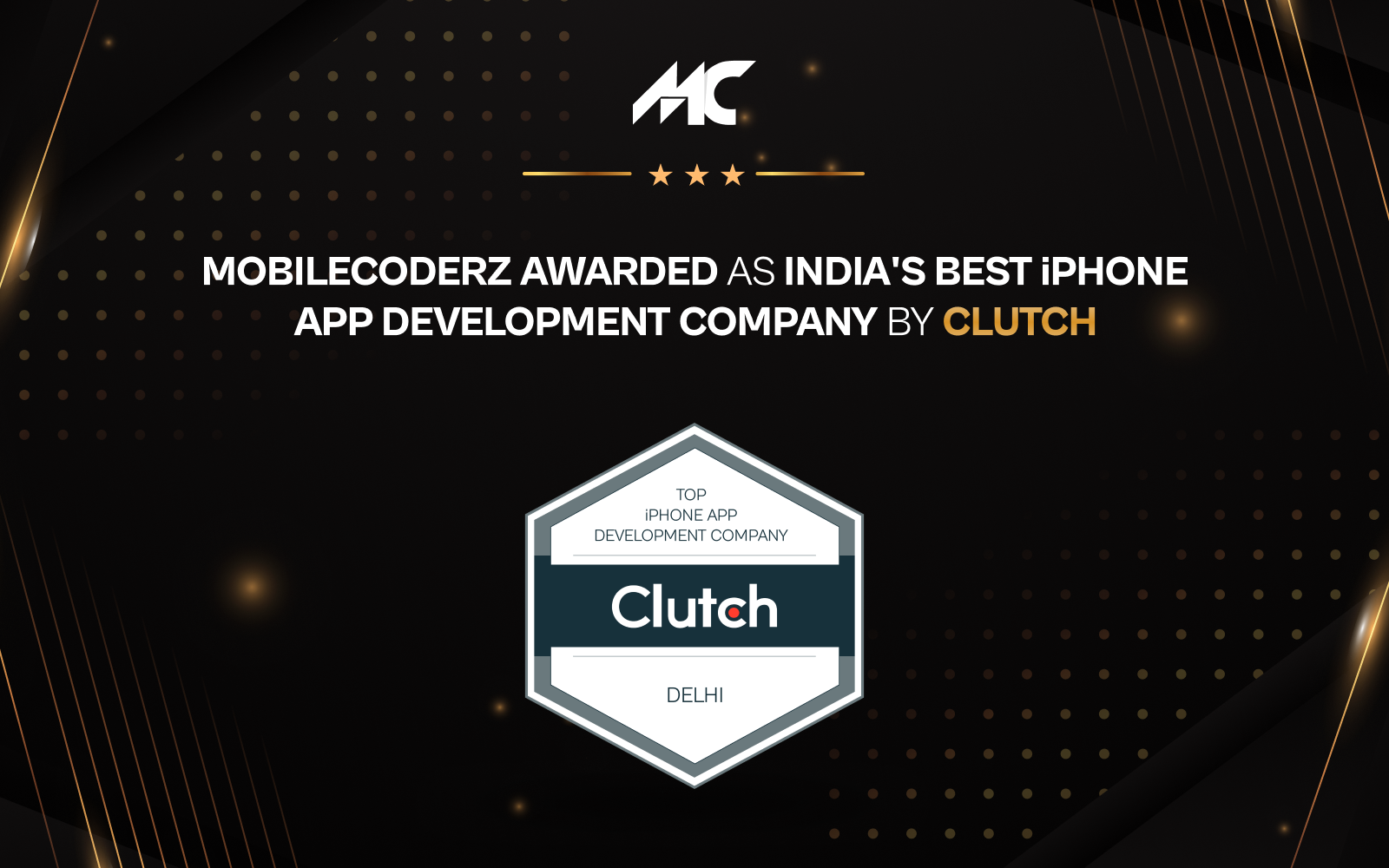 Mobilecoderz Awarded as India’s Best iPhone App Development Company by Clutch
Mobilecoderz Awarded as India’s Best iPhone App Development Company by Clutch -

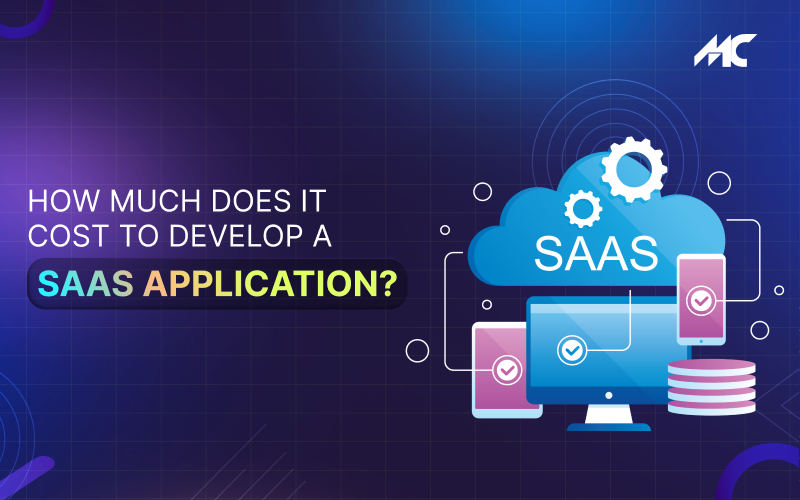 How Much Does It Cost to Develop a SaaS Application?
How Much Does It Cost to Develop a SaaS Application? -

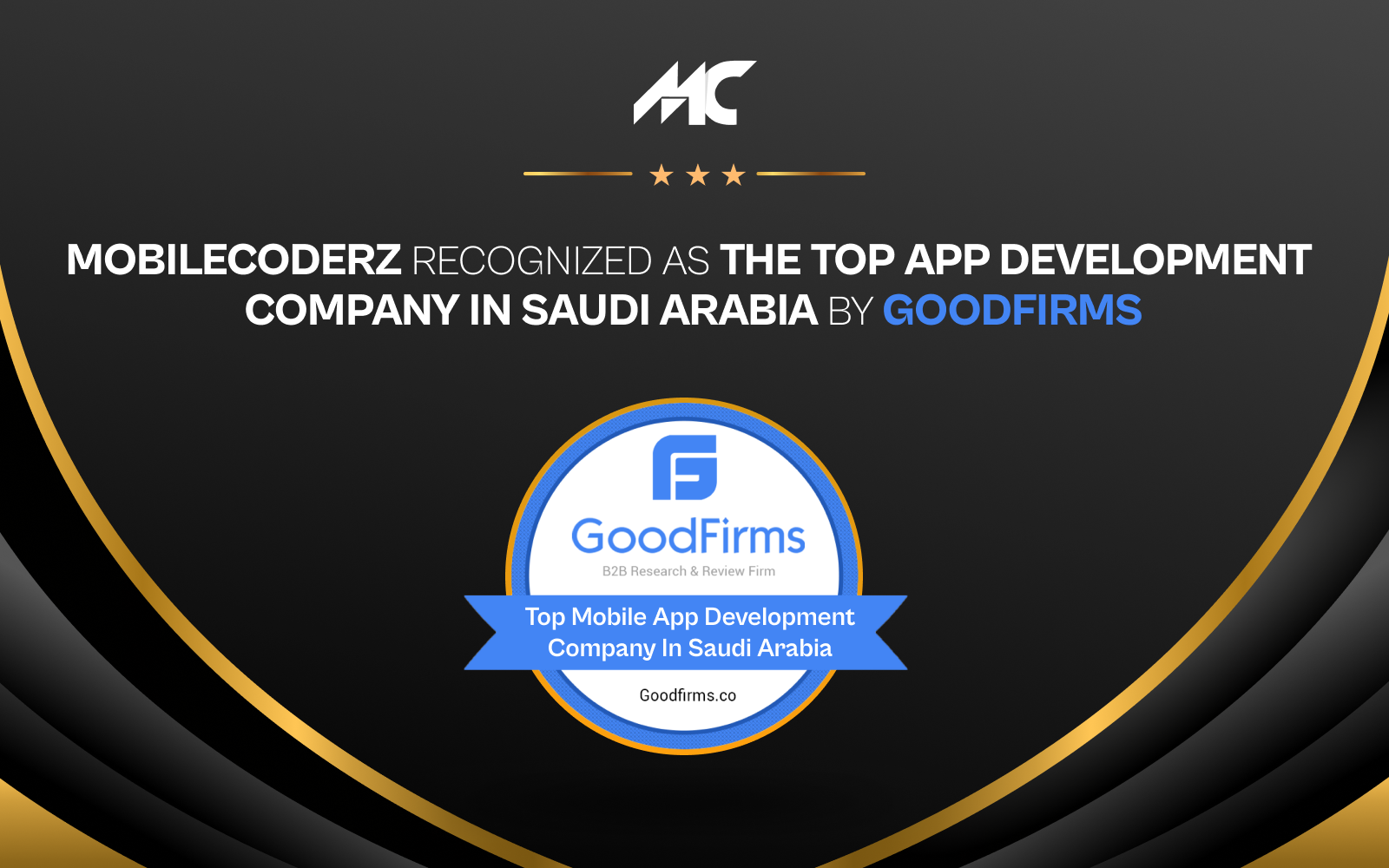 Mobilecoderz recognized as the Top App Development Company in Saudi Arabia by GoodFirms
Mobilecoderz recognized as the Top App Development Company in Saudi Arabia by GoodFirms





